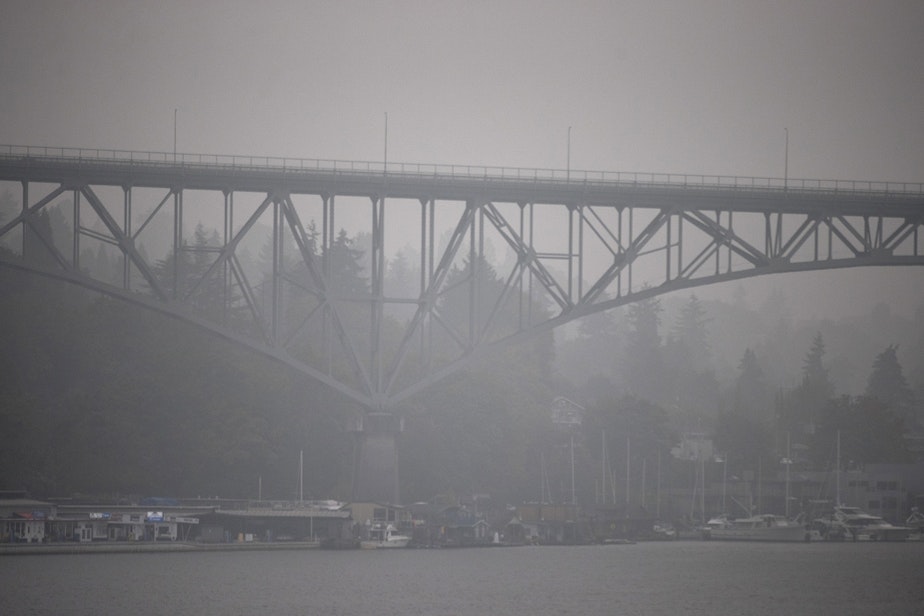New 5-day smoke forecast could help protect Washingtonians' health

Washington state officials are predicting another bad wildfire season in the Northwest. The state experienced the second-driest spring since 1895. In eastern Washington, that has primed forests and grasslands for wildfires.
With those fires comes a lot of smoke. This year, there's a new tool to help you get prepared — a five-day smoke forecast.
Ranil Dhammapala is an atmospheric scientist with the Washington State Department of Ecology. He told KUOW’s Kim Malcolm why he and his colleagues built the forecast.
This interview has been edited for clarity.
Ranil Dhammapala: The simple answer: because of public demand. We got a whole lot of questions from the public about what's going to happen this coming weekend, if their favorite hiking trailhead would be OK to go to, or some event that they were planning outdoors. It wasn't just the usual two-day forecasts, which we had operational last year anyway. People tended to want information a little further out.
If you know what's coming, you could preemptively take steps to protect your health, minimize your exposure to smoke, and restructure your activities accordingly. We think that it empowers people to do a better job of protecting themselves. We worked pretty hard to figure out the technical details and get over the challenges.
Kim Malcolm: How do you actually go about forecasting wildfire smoke?
Dhammapala: First of all, you've got to account for the weather, the variability of temperature, wind speeds, relative humidity, and all the weather-related variables on an hourly basis, in both time and space. The next important step, and this is where a lot of the uncertainty comes from, is to try to understand the smoke emissions. You've not only got to get a good picture of current wildfire conditions, which satellite imagery can inform you on, but you've also got to be able to project out what kind of wildfire smoke will be present in the next few days.
Sponsored
That's where it's quite challenging because you don't know what new fires may spring up, and where they would be. You don't know if firefighters will be able to get the upper hand on some existing fires, or if those might just tend to blow up themselves. And there is the question of how high the plumes would rise straight out of the fires, or if the fires would tend to smolder and the plumes tend to creep along the surface. Those are the big challenges. Those are the variables that you have to try to account for.
How accurate is a smoke forecast five days out?
Dhammapala: I was afraid you would ask. Unfortunately, there is no easy way to know. There are many uncertainties in all the variables that we've got to consider. Some level of give-and-take is to be expected. The only way to truly evaluate it is to have a series of bad smoke episodes, but those are not good for people.
We're not going to hope that we get those smoke episodes just to be able to improve our forecast product. It's not what we wish on the citizens of our state. We wish the very opposite. But if and when those situations do manifest, then we will be sure to collect the data and take it back to the drawing board and do what it takes to improve forecasts in the future.
What do you want people to know in terms of what you and your colleagues are trying to provide, and how people should interpret that information?
Sponsored
Dhammapala: I fear that we'll probably end up in the same boat. The thing to pay attention to is not just your location and that alone. Pay attention to areas around you. It's likely that there might be better or even worse air not far away from you. Go with the most pessimistic outlook and prepare for that. Then you can only be pleasantly surprised.
Link to the Department of Ecology’s five-day Smoke Forecast
Listen to the interview by clicking the play button above.





